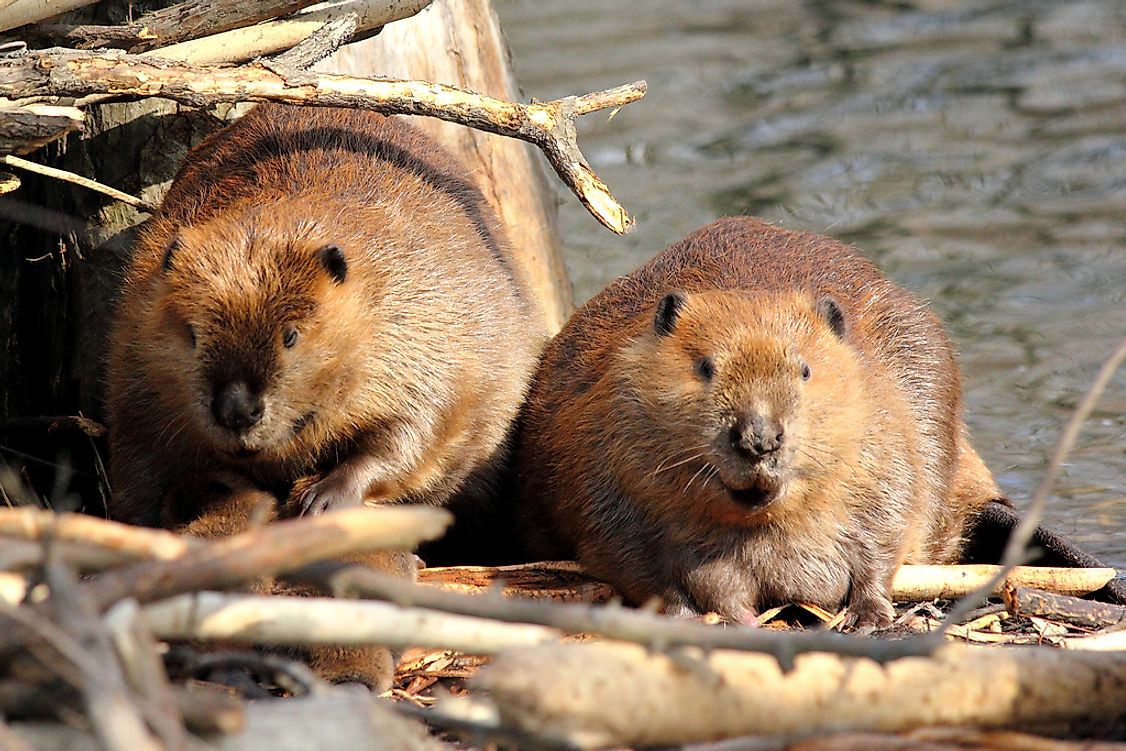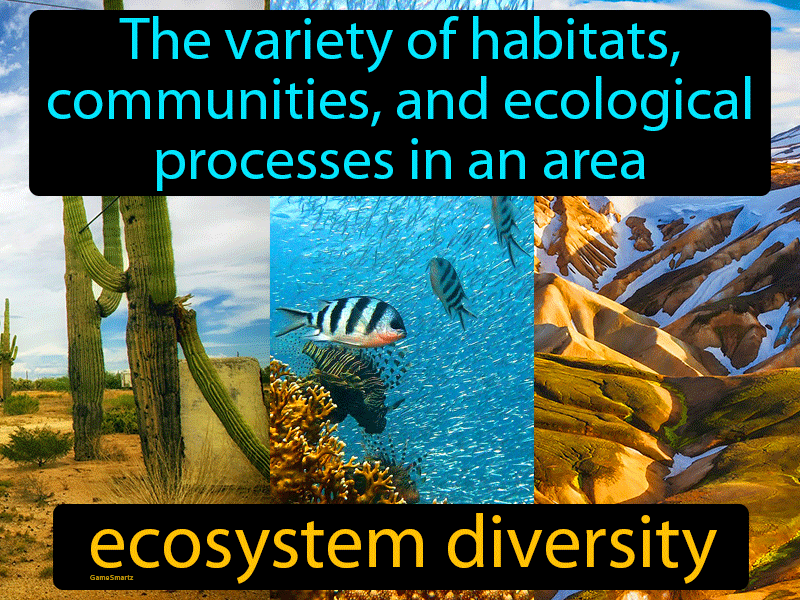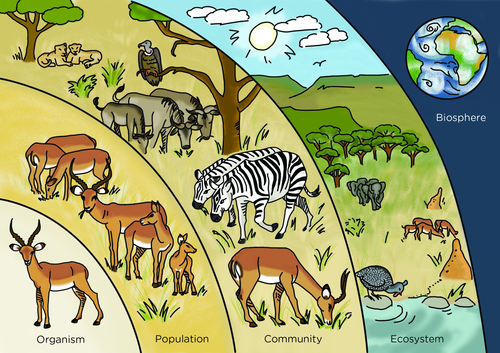Topic what is an ecosystem engineer: Discover the pivotal role of ecosystem engineers, nature"s own architects, in shaping and maintaining the vital habitats and ecosystems that support diverse life forms on our planet.
Table of Content
- What role do plants, corals, and kelp play as ecosystem engineers within their habitats?
- Definition and Importance of Ecosystem Engineers
- Examples of Ecosystem Engineers
- Roles and Functions in Ecosystems
- Impact on Biodiversity and Ecosystem Stability
- Types of Ecosystem Engineers: Allogenic and Autogenic
- Human Influence as Ecosystem Engineers
- YOUTUBE: Ecosystem Engineers
- Conservation and Management of Ecosystem Engineers
- Challenges and Future Research Directions
What role do plants, corals, and kelp play as ecosystem engineers within their habitats?
Plants, corals, and kelp are crucial ecosystem engineers within their habitats due to their ability to create and modify the environment to benefit a variety of species. Here is a detailed explanation of the role they play:
- Habitat Creation: These organisms create physical structures that serve as habitats for other species. For example, plants provide shelter for insects, birds, and small mammals.
- Protection: Corals and kelp can act as barriers, protecting coastlines from erosion and providing a safe environment for marine life.
- Resource Provision: Plants, corals, and kelp also contribute to the ecosystem by providing food, oxygen, and shelter for numerous organisms, thereby supporting the overall biodiversity.
- Regulation of Environmental Conditions: By influencing factors such as water clarity, light penetration, and nutrient cycling, these ecosystem engineers help maintain the health and stability of their habitats.
- Facilitation of Interactions: Plants, corals, and kelp facilitate complex ecological interactions by creating niches for different species and promoting symbiotic relationships within the ecosystem.
In conclusion, plants, corals, and kelp play a vital role as ecosystem engineers by shaping and maintaining their habitats in ways that support the diversity and resilience of ecosystems.
READ MORE:
Definition and Importance of Ecosystem Engineers
Ecosystem engineers are organisms that directly or indirectly modulate the availability of resources to other species, by causing physical state changes in biotic or abiotic materials. Through these actions, they create, modify, maintain, or destroy habitats.
- Key Examples: Beavers, by building dams, create wetlands that support diverse ecosystems.
- Impact on Biodiversity: These engineers play a crucial role in biodiversity by shaping the physical environment, thus influencing which species thrive in certain areas.
- Allogenic vs. Autogenic Engineers: Allogenic engineers change the environment by transforming materials from one form to another, like beavers with wood. Autogenic engineers modify the environment through their own physical bodies, like corals building reefs.
Their actions can have profound implications for ecosystem functioning and resilience, affecting everything from water purification to soil fertility and climate regulation. Understanding and conserving ecosystem engineers is therefore crucial for maintaining biodiversity and the services ecosystems provide to humanity.

Examples of Ecosystem Engineers
- Beavers: Known for building dams in rivers, creating wetlands that provide habitats for a multitude of species.
- Earthworms: Improve soil structure, fertility, and water holding capacity through their burrowing activities.
- Coral Reefs: Corals build extensive reefs that provide shelter and food for a vast array of marine life.
- Elephants: Their feeding behavior can transform forests into savanna-like areas, affecting the distribution of plant and animal species.
- Trees: Large trees can significantly alter their environment, providing habitat and regulating microclimates within forests.
These examples illustrate the diverse ways in which ecosystem engineers influence their environments. From aquatic to terrestrial, and from micro to macro scales, these organisms play key roles in shaping the biosphere, highlighting the interconnectedness of life and the importance of conserving these pivotal species.
Roles and Functions in Ecosystems
Ecosystem engineers play indispensable roles in ecosystems, significantly influencing biodiversity and ecosystem functions. Their activities impact various ecological processes, highlighting the importance of their presence for ecosystem health and stability.
- Creation of Habitats: Engineers such as beavers and corals create new habitats, offering living spaces for numerous species.
- Modification of Resources: By altering the physical environment, they modify the availability of resources like light, water, and nutrients.
- Soil Aeration and Fertility: Earthworms and other soil dwellers enhance soil structure, promoting aeration and nutrient cycling.
- Water Quality Improvement: Wetlands, created by beaver dams, can filter pollutants, improving water quality.
- Climate Regulation: Vegetation, through photosynthesis, acts as carbon sinks, playing a role in climate regulation.
Their functions underscore the interconnectedness of ecosystem components and the vital role engineers play in sustaining ecological balance. Their management and conservation are crucial for maintaining ecosystem services upon which life depends.

Impact on Biodiversity and Ecosystem Stability
The influence of ecosystem engineers on biodiversity and ecosystem stability is profound, driving the structure, function, and diversity of habitats. Their activities promote resilience in ecosystems, allowing them to withstand and recover from disturbances.
- Enhancement of Biodiversity: By creating and modifying habitats, engineers increase niche diversity, supporting a wider range of species.
- Stabilization of Ecosystems: Their actions can help stabilize physical environments, making ecosystems more resilient to changes and disturbances.
- Promotion of Ecosystem Services: Engineers play a crucial role in maintaining ecosystem services, such as water purification, soil fertility, and climate regulation, which are essential for life.
- Facilitation of Species Interactions: By altering the landscape, they influence the interactions between species, such as predation, competition, and mutualism, which can affect community composition and diversity.
Their impact extends beyond the immediate physical changes, influencing ecological processes and interactions that are critical for ecosystem health and stability. The loss of ecosystem engineers can lead to reduced biodiversity and a decline in ecosystem services, highlighting the need for their protection and conservation.
Types of Ecosystem Engineers: Allogenic and Autogenic
Ecosystem engineers can be categorized into two main types based on how they affect their environment: allogenic and autogenic. Understanding these types helps in comprehending the diverse ways organisms interact with and alter their habitats.
- Allogenic Engineers: These organisms change the environment by transforming living or non-living materials from one state to another. For example, beavers cut down trees and build dams, significantly altering water flow and creating new aquatic habitats.
- Autogenic Engineers: These species alter the environment through their physical presence or biological processes. Trees, for instance, can modify the light environment and soil conditions through their canopy and root systems, affecting the undergrowth and soil organisms.
Both types of engineers are pivotal in shaping ecosystems, but their methods and impacts vary. Allogenic engineers tend to cause more visible and immediate changes, while autogenic engineers often influence ecosystems more subtly over longer periods. Recognizing the roles of these engineers is crucial for understanding ecosystem dynamics and for conservation efforts aimed at preserving biodiversity and ecosystem functions.

Human Influence as Ecosystem Engineers
Humans are perhaps the most impactful ecosystem engineers on the planet, significantly altering natural environments on a global scale. Through various activities, humans have reshaped landscapes, altered the composition of species, and affected the global climate.
- Urbanization: The construction of cities, roads, and infrastructure changes land cover, alters water flow, and impacts local ecosystems.
- Agriculture: Farming practices transform land use, modify soil properties, and create habitats for a variety of species, while also sometimes reducing biodiversity.
- Deforestation: Removing forests for timber or to clear land for other uses drastically impacts climate regulation, water cycles, and habitats.
- Restoration Projects: Efforts to restore ecosystems, such as reforestation or wetland restoration, demonstrate a positive aspect of human impact, aiming to repair damaged ecosystems and enhance biodiversity.
While human activities have often been associated with negative impacts on natural ecosystems, there is a growing recognition of the potential for positive influence. Through sustainable practices and restoration efforts, humans can act as beneficial ecosystem engineers, helping to conserve and enhance biodiversity and ecosystem health.
Ecosystem Engineers
Beavers are fascinating creatures known for their impressive dam-building skills and intricate social structures. Watch our video to learn more about these industrious animals and their important role in shaping their environment. Organisms are the building blocks of life, diverse and intricate in their forms and functions. Dive into the world of organisms with our captivating video, exploring the wonders of biology and the beauty of nature\'s complexity.
Ecosystem Engineers
Do you know what an ecosystem engineer is? In \"The Wild Robot\" by Peter Brown, Roz the Robot becomes one; in this video, Dr.
Conservation and Management of Ecosystem Engineers
The conservation and management of ecosystem engineers are critical for maintaining biodiversity, ecosystem stability, and the services ecosystems provide. Effective strategies involve understanding their roles, impacts, and the challenges they face.
- Identifying Key Engineers: Recognizing species that have significant impacts on ecosystem structure and function is the first step in conservation efforts.
- Protecting Habitats: Ensuring the protection of habitats crucial for the survival of ecosystem engineers, which in turn supports broader biodiversity.
- Restoration Projects: Implementing restoration projects that enhance the populations and habitats of ecosystem engineers, thus restoring ecosystem functions and services.
- Monitoring and Research: Ongoing monitoring and research to understand the changing dynamics of ecosystems and the roles of engineers within them.
- Policy and Legislation: Developing policies and legislation that support the conservation of ecosystem engineers and the ecosystems they help shape.
Through targeted conservation and management practices, it is possible to safeguard these vital organisms and ensure the continued health and resilience of ecosystems worldwide. The integration of ecosystem engineer conservation into broader environmental strategies is essential for sustainable ecosystem management and biodiversity protection.

READ MORE:
Challenges and Future Research Directions
Addressing the challenges facing ecosystem engineers and identifying future research directions are crucial for the conservation of biodiversity and the sustainability of ecosystems. These efforts require interdisciplinary approaches and innovative solutions.
- Climate Change: Understanding how global climate change affects ecosystem engineers and their ability to modify habitats is essential for adaptive management strategies.
- Human Impact: Researching the extent of human activities on ecosystem engineers and finding ways to mitigate negative impacts while enhancing positive interactions.
- Loss of Biodiversity: Investigating how the loss of key ecosystem engineers affects ecosystem functions and services, and developing conservation strategies to protect these species.
- Integration of Ecological Engineering: Incorporating ecological engineering concepts into landscape management and restoration projects to enhance ecosystem resilience and function.
- Interdisciplinary Research: Promoting interdisciplinary research that combines ecology, engineering, sociology, and economics to understand and manage ecosystem engineers effectively.
The future of ecosystem management and conservation lies in addressing these challenges through targeted research, policy development, and the implementation of sustainable practices. Understanding the complex roles of ecosystem engineers will be pivotal in navigating the path towards resilient and healthy ecosystems.
Exploring the world of ecosystem engineers reveals their indispensable role in shaping our planet"s future, offering insights into creating more resilient and biodiverse ecosystems for generations to come.








